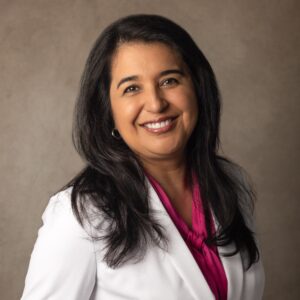By Gabriela Calvi – Epidemiologist|Public Health Educator| Podcaster “Buenos Días Salud”
‘I was in the shower one morning, when I felt a small lump in my breast. I was afraid and busy…” You may be reading this article because you, or someone you know found a breast lump or other breast change. October is Breast Cancer Awareness month.
While breast changes are very common. Most breast changes are not cancer. But it is very important to get the follow – up tests that your health care provider asks you to. Even if you don’t think you have abnormalities with your breast, it is always wise to know the signs and symptoms of breast. Because they are certain conditions that increases your risk of breast cancer.
Here are the symptoms:
A lump, hard knot or thickening in the breast
A lump under your arm
A change in the size or shape of a breast
Nipple pain, tenderness or discharge/bleeding
A nipple turning inward or inverted
A change in skin color and texture such as dimpling, puckering, or redness
Itchiness, scales, soreness or rash on nipple
On the other hand, there are certain population that are most at risk of having breast cancer.
Older women and / or entered menopause after age 55
Personal or family history of breast cancer
Obesity
Drinking alcohol
Have never had children or had their 1st child after age 30
Currently using birth control pills
Have used hormones replacement therapy, such as estrogen and progesterone for more than 10 years
Have mutations of BRCA1, BRCA2, or PALB2 genes
Women not physical active.
Breast cancer screening test can help find cancer at an early stage, before symptoms appear. When abnormal tissue or cancer is found early, it may be easier to treat or to cure. However, by the time symptoms appear, the cancer may have grown, spread and can make the cancer harder to treat. Therefore, the importance of doing annual breast cancer screenings.
Women’s Wellness exam should be considered as a PROACTIVE approach. It focuses on eliminating problems before they have a chance to appear. Which means obtaining a breast cancer screening equals to prevention. Whereas if a women’s wellness exam is considered with a REACTIVE approach. The reactive method is based on how you respond and act once the event has occurred. For example; in the state where I live, we are prone to tornadoes. My way of being PROACTIVE in the face of this situation is to have my 72-hour emergency kit on hand, be aware of the weather conditions, be alert to the sound of the sirens. If, it is night time I must wake up my children and give them instructions to go downstairs to seek shelter in place under the stairs closet or guest bathroom. What could possibly happen if I don’t have any preparation on this topic? ¡I can assure you that I would immediately act REACTIVELY, instead of PROACTIVELY!
The same applies to a situation when someone has a cardiac arrest, whoever is not prepared before a medical emergency may act in a reactive manner. Simply because I don’t know how to apply CPR/First Aid.
My fellow women, I invite you to call your health care provider to check your breasts and also to understand them. No change is too small to ask about. Don’t wait until your next mammogram. If you don’t have a PCP and/or insurance. Please check your local Public Health Department to learn more about their community health programs.


